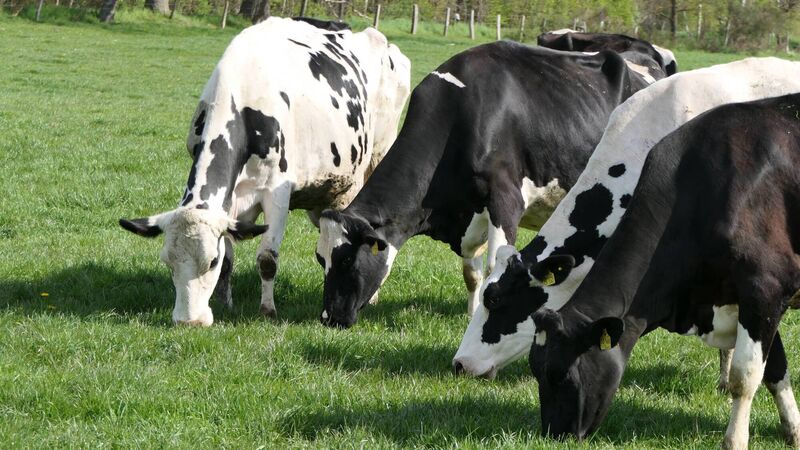Stephen Cadogan: Why Irish dairy has escaped the brunt of US tariffs

Irish butter was always subject to a tariff of about 16%, which now falls to 15%.
Many in the Irish food industry are breathing sighs of relief as they evaluate the latest EU-US tariffs agreement, even as some nations still pick themselves off the floor after huge Trump tariffs slammed the trading door in their faces.
The small print in the EU-US Joint Statement on Transatlantic Trade and Investment indicated that the 15% Trump tariff on most EU goods will not be stacked. Agriculture minister Martin Heydon said: "This is positive for Irish butter exports in particular, which since April have faced an additional tariff rate of 10%, stacked on a pre-existing tariff of 16%."
Conor Mulvihill of Dairy Industry Ireland agreed. “For our key dairy sector, which exports over 90% of its output, all tariffs are regrettable. However, the confirmation that EU exports will now be subject to a single 15% tariff rate, with no additional stacked duties, is particularly important for Irish dairy products such as butter, which had faced a combined tariff burden of over 25% since April."
Ireland exported about €1.9bn of food and drink products into the US market in 2024 (11% of our total food and drink exports). Dairy at €830m and drinks, predominantly whiskey, at €900m, account for 91%. Ireland also sends about €23m of pigmeat, €8.8m of beef, and €3.8m of seafood to the USA.
Tariffs will not affect the dairy trade as much as feared. For example, Irish butter was always subject to a tariff of about 16%, which now falls to 15%. The US had a 14.9% tariff on cheese, and the new tariff for EU cheese will be 15%, practically unchanged.
Other regions' exporters to the USA have not been so fortunate, because new Trump tariffs were stacked on the existing tariffs they incurred. This means that many in the Irish and EU food industries may have done better than exporters in the UK, despite Trump agreeing a 10% tariff for the UK, and 15% for the EU.
The subtle difference in the deals is illustrated by the case of England's famous Stilton cheese, exports of which to the USA will incur Trump's 10% tariff on top of existing tariffs, for a total import duty of between 23% and 27%.
The US-UK trade deal also opened Britain’s borders to 1.4 billion litres of tariff-free American ethanol. This has accelerated the closure of the Vivergo bioethanol plant in Yorkshire, which purchases up to one million tonnes of grain annually from more than 4,000 UK farms.
The Vivergo owners said regulations to “favour foreign producers", and removing tariffs on US bioethanol, undermined Vivergo's commercial viability. The UK's other bioethanol company, Ensus, may also close, due to the UK-US trade deal.
The deal also gave new, tariff-free access to the UK beef market for 13,000 tonnes of hormone-free beef from the USA, and a tariff reduction on the existing 1,000 tonne beef quota from 20% to zero. That will threaten beef farmers in both the UK and in Ireland, which is the dominant import supplier of beef in the UK, but must now compete against more US beef.
Still, the Irish and EU food and agriculture sectors are mostly relieved, after President Trump's threatened 30% tariffs were avoided.
In the broader economic context, Ireland and the EU have also welcomed the US commitment that pharmaceuticals (Europe’s top export to the US, which President Trump had threatened to tax at up to 200%), semiconductors, and lumber are included in the 15% tariff ceiling.
It looks like the EU will also settle for a 15% tariff ceiling for cars (replacing a current 27.5%), and zero or close to zero tariffs on EU products such as cork, aircraft and aircraft parts, and generic pharmaceuticals and their ingredients and chemical precursors.
For steel and aluminium, the EU and US will work on solutions to ensure secure supply chains, including tariff rate quotas.
The EU will eliminate tariffs on industrial goods imported from the US, and will significantly improve market access for certain American seafoods, nuts, dairy products, fresh and processed fruits and vegetables, processed foods, grains and planting seeds, soybean, pork and bison meat.
The EU says this makes imports that EU industry and end-consumers need from the US cheaper and more available, but without compromising any EU trading sensitivities around products such as beef, poultry, rice, or ethanol.
The EU and US agreed to reduce non-tariff barriers (but there is no question of negotiating EU sanitary and phytosanitary rules or standards, said the commission).
Still, exporters of EU products previously tariffed in the USA at only 4.8% on average will be disadvantaged by the new 15% customs duty, and it nearly trebles the existing average 5.5% US tariff rate on EU food products.
The deal includes the EU purchasing $750 billion of US energy and buying “vast amounts” of military equipment. The EU has also pledged to invest an additional $600 billion in the US.
It's a better deal than many other US trading partners managed to negotiate, but reactions have varied widely, and it will take time for the real effects to show. President Trump is bringing about a new world trading order of arbitrarily and unilaterally imposed import duties on exports to the US.
These duties are paid by the American importer, who has to ask for a discount from the supplier, or raise the price for US consumers (and US manufacturers using imported raw materials), thus hurting the American economy by increasing the rate of inflation.
Meanwhile, a continuing trade war with countries who do not agree a trade deal with the US further damages the world economy.
Some economists predict an inflation surge in the US of an additional 3%, and say the US itself would be one of the most negatively affected economies (apart perhaps from Mexico and Canada). How would President Trump respond? Would he raise tariffs even further? That would not come as a surprise to many.













